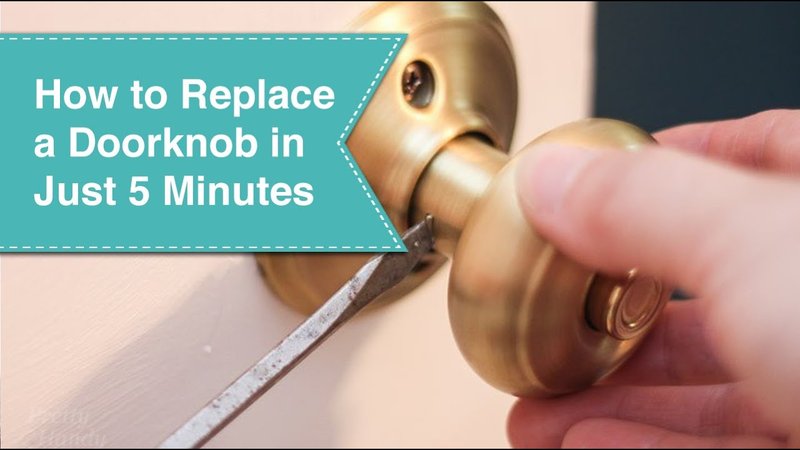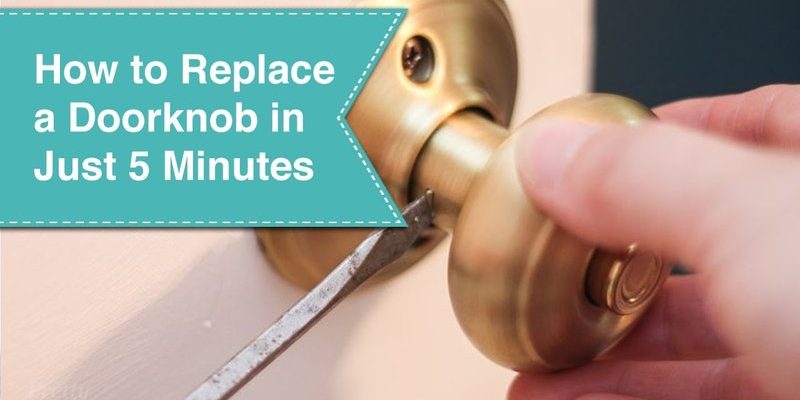
In this guide, we’ll walk through troubleshooting a new interior door knob that doesn’t latch. We’ll cover why this might be happening, what tools you might need, and the steps to take to fix it. Whether you’ve picked up a knob from a store like Home Depot or Lowe’s, understanding the mechanics behind how a door knob works can make a big difference in solving the issue quickly.
Understanding the Door Knob Mechanism
Before we dive into troubleshooting, let’s take a moment to understand how a door knob works. A standard interior door knob consists of several parts: the knob itself, the spindle, the latch, and the strike plate. When you turn the knob, the spindle rotates the latch, allowing it to retract into the door and let you enter or exit.
If any of these components are misaligned, damaged, or improperly installed, you can end up with a door knob that won’t latch. Think of it like a lock not fitting in a keyhole; if the pieces don’t match, it just won’t work.
Common Causes of a Non-Latching Door Knob
When your new door knob fails to latch, a few common culprits could be to blame. Understanding these issues can guide you in troubleshooting effectively.
Misalignment: A frequent reason for a door knob not latching is misalignment. The strike plate—the metal piece on the door frame that the latch catches on—might not be lined up with the latch properly. This can happen if the door is not hung correctly or if the knob was installed at the wrong height.
Fastener Issues: If the screws that hold the knob and latch in place are loose, it might cause the entire mechanism to wobble when you try to use it. Over time, even a small amount of movement can lead to bigger problems with alignment.
Damaged Parts: If your door knob or latch is defective, it simply won’t catch properly. This might be an issue with a faulty spring or a latch that doesn’t fully extend. Sometimes, manufacturing defects can slip through quality control, so it’s worth checking for this.
Tools You’ll Need for Troubleshooting
Before you start working on your door knob, it’s a good idea to gather a few basic tools. Having everything on hand will make the process smoother and more efficient. Here’s what you might need:
- Flathead screwdriver
- Phillips screwdriver
- Drill (if you need to adjust screws)
- Level (to check alignment)
- Measuring tape
These tools are relatively common, and most people have them around the house. If not, they can be easily picked up at any hardware store. Once you have your tools ready, you can proceed with troubleshooting.
Step-by-Step Troubleshooting
Now that you’re equipped with the necessary tools, it’s time to jump into some troubleshooting. Here’s a step-by-step process to identify and fix the issue:
Step 1: Check Alignment
First, close the door and check if the latch lines up with the strike plate. Use a level if you have one, as this can help you see any tilt. If it looks off, you may need to adjust the door hinges or reposition the strike plate.
Step 2: Tighten Fasteners
Next, check all the screws on the doorknob and latch assembly. Ensure they’re tight. Sometimes, a quick twist with a screwdriver can solve a lot of problems. If the screws are stripped or damaged, consider replacing them with new ones.
Step 3: Inspect the Latch
With the doorknob off, take a close look at the latch. Ensure it’s not bent or damaged. *If it appears faulty, you might have to replace it*. Most latches come as a unit with the knob, so if one is bad, it’s best to get a new one.
Adjusting the Strike Plate
If your troubleshooting reveals that the latch is functioning well but still doesn’t catch, you might need to adjust the strike plate. Here’s how to do it:
Step 1: Loosen the Screws
Use your screwdriver to slightly loosen the screws of the strike plate. This will allow you to adjust its position without removing it completely.
Step 2: Align the Strike Plate
Close the door and move the strike plate up or down until the latch aligns perfectly with the opening. You might need someone to help you hold the door while you adjust the plate.
Step 3: Test the Closure
After adjusting, tighten the screws back up and test the door. If the latch still doesn’t catch, you may need to repeat the process.
When to Replace Your Door Knob
If you’ve gone through all the troubleshooting steps and your door knob still doesn’t latch, it may be time for a replacement. Here are a few signs that it’s best to invest in a new doorknob:
- The latch is damaged beyond repair.
- The knob feels loose or wobbly even when tightened.
- It was a very inexpensive model that you suspect has a manufacturing issue.
Buying a new knob doesn’t have to break the bank. You can find plenty of options that balance quality and cost at local retailers.
Preventing Future Problems
To avoid running into issues with your door knob in the future, regular maintenance is key. Here are some helpful tips:
- Inspect your doorknob every few months to catch any loosening screws or misalignments early.
- Make sure the screws are tightened but be careful not to overtighten—this can strip the screw holes.
- If you notice any issues, address them right away to prevent bigger problems down the road.
By keeping an eye on your door knob, you can ensure it stays in good working order for years to come.
In conclusion, troubleshooting a new interior door knob that doesn’t latch can be a straightforward process if you know what to look for. With a bit of patience and the right tools, you can either fix the problem or make an informed decision about getting a replacement. Remember, a fully functioning door knob not only secures your privacy but also adds to the overall comfort of your home. Happy fixing!
